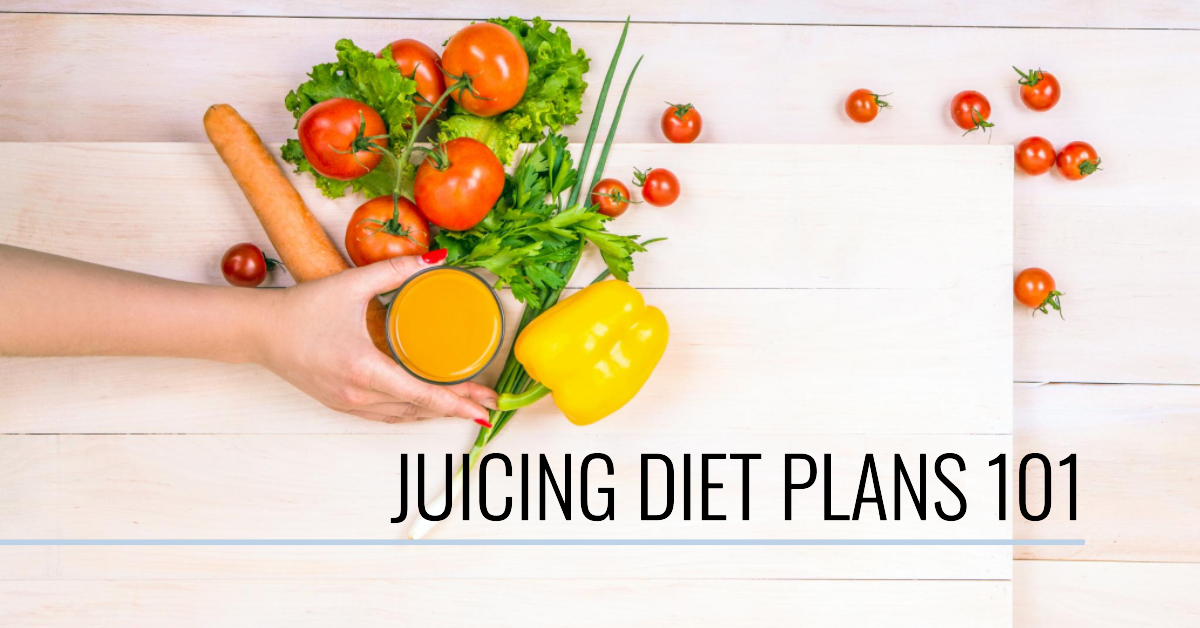Are you seeking a way to infuse your life with vibrant energy, enhance your well-being, and nourish your body with essential nutrients? Juicing holds the key to unlocking a world of health benefits, and in this blog post, we will unveil the secrets, recipes, and practical insights to help you reap its rewards.
Join us as we explore the fundamentals of juicing, discover the astonishing health benefits it offers, and delve into a diverse array of tantalizing juice recipes tailored to meet different health goals. Whether you’re looking to boost your immunity, promote digestion, or simply revitalize your daily routine, “Juicing Diet Plans 101” is your ultimate guide to revitalizing your health and embracing a zestful, rejuvenated you.
Juicing Diet Plans 101: A Comprehensive Handbook to Revitalize Your Health
Section 1: The Basics of Juicing
Let’s start our juicing journey with a solid understanding of the basics. Juicing is the process of extracting liquid from fruits and vegetables, leaving behind the fibrous pulp.
This liquid, known as juice, is packed with essential vitamins, minerals, and phytonutrients that can be easily absorbed by the body, promoting better health and vitality.
When it comes to juicers, there are two primary types to consider:
- Centrifugal Juicers: These machines rapidly spin the fruits and vegetables against a fine mesh, separating the juice from the pulp. They are generally more affordable and quicker, making them ideal for beginners or those with limited time.
- Masticating Juicers: Operating at lower speeds, masticating juicers gently crush and squeeze the fruits and vegetables to extract the juice. This method preserves more nutrients, enzymes, and antioxidants, making it a popular choice for health enthusiasts.
Selecting the right juicer for your needs and budget is crucial, as it will significantly impact the nutritional quality of your juices.
We have compiled a list of the best pomegranate juicers you can try.
Section 2: The Health Benefits of Juicing
Juicing offers a plethora of health benefits, making it an attractive addition to your daily routine:
- Enhanced Nutrient Intake: Juicing provides a concentrated source of essential vitamins, minerals, and antioxidants, promoting overall health and supporting your immune system.
- Improved Digestion: By removing the fiber, juicing allows for easier digestion and absorption of nutrients, reducing the workload on your digestive system.
- Increased Energy: Nutrient-dense juices can provide a natural and sustainable energy boost, without the crashes associated with sugary drinks or caffeine.
- Detoxification: Some juice recipes incorporate ingredients with detoxifying properties, helping your body eliminate toxins and waste.
- Clearer Skin: The antioxidants in juices can contribute to a healthy complexion by neutralizing free radicals and promoting skin rejuvenation.
- Weight Management: Incorporating juices made from low-calorie, nutrient-dense ingredients can support weight management and help you achieve your wellness goals.
Section 3: Types of Juices for Different Health Goals
Juicing diet plans can be tailored to address various health goals and concerns. Here are some juice recipes to get you started:
- Morning Revitalizer: Kickstart your day with a nutritious blend of kale, spinach, green apple, lemon, and ginger. This invigorating juice provides a burst of vitamins and minerals, along with a zing of flavor to wake up your senses.
- Immunity Booster: Fortify your immune system with a vibrant mix of orange, carrot, turmeric, and a pinch of black pepper. The high vitamin C content and the immune-boosting properties of turmeric make this juice a potent weapon against illnesses.
- Digestive Aid: Soothe your digestive system with a refreshing concoction of cucumber, mint, aloe vera, and pineapple. This hydrating and anti-inflammatory juice can alleviate digestive discomfort and promote gut health.
- Antioxidant Powerhouse: Fight oxidative stress with a colorful combination of berries, beetroot, and pomegranate. Loaded with antioxidants, this juice can protect your cells from damage and support your overall well-being.
Here are some of the 10 juicing recipes that will help you choose one that is perfect for you.
Remember to experiment with different ingredients and ratios to find the flavors and health benefits best suit your preferences and needs.
Section 4: Incorporating Juices into Your Diet
Integrating juicing into your daily routine is a fantastic way to boost your nutrient intake. Here are some practical tips to help you make the most of your juicing experience:
-
Start Gradually:
If you’re new to juicing, begin with one glass of juice per day and gradually increase your intake as your body adjusts. Listen to your body and find a comfortable balance.
-
Balance Your Diet:
While juicing can be beneficial, it’s essential to maintain a balanced diet with whole foods, including fruits, vegetables, whole grains, and lean proteins. Juices should complement your diet, not replace it entirely.
-
Be Mindful of Sugar Content:
Although fruits are packed with nutrients, they also contain natural sugars. To avoid excessive sugar intake, balance fruit-heavy juices with greens and vegetables.
-
Preparing Your Ingredients:
Wash fruits and vegetables thoroughly before juicing to remove any pesticides or dirt. Consider using organic produce when possible.
Meal Replacement vs. Supplement: While juices can occasionally serve as meal replacements, relying solely on juices for extended periods is not advisable. Whole foods provide essential fiber and other nutrients that juices lack.
Section 5: Potential Risks and Precautions
Juicing can be a valuable addition to a healthy lifestyle, but it’s crucial to be aware of potential risks and precautions:
-
Nutrient Imbalance:
Relying exclusively on juicing may lead to nutrient imbalances, as juices lack the fiber and protein found in whole foods. It’s best to incorporate a diverse range of foods into your diet.
-
Sugar Spike:
Juices with high fruit content can cause rapid spikes in blood sugar levels, especially in individuals with diabetes or insulin resistance. Balance fruit sweetness with vegetable ingredients to mitigate this risk.
-
Interactions with Medications:
Some fruits and vegetables may interact with certain medications, affecting their efficacy or causing adverse effects. Always consult your healthcare provider before starting a juicing regimen, especially if you’re taking medication.
Section 6: FAQs and Troubleshooting
Let’s address some common questions and troubleshooting tips to enhance your juicing experience:
1. Can I juice ahead of time?
While it’s best to consume fresh juice immediately after preparation to retain maximum nutrients, you can store juice in airtight containers in the refrigerator for up to 24 hours.
2. What can I do with the leftover pulp?
Don’t let the pulp go to waste! You can incorporate it into recipes like muffins, soups, and stews to add fiber and nutrition. Alternatively, consider composting the pulp for eco-friendly disposal.
3. Why does my juice separate?
Natural separation of juice is normal due to varying densities of ingredients. Give the juice a quick stir before drinking to mix it back together.
Section 7: Success Stories
Nothing inspires and motivates better than real success stories. Here are some testimonials from individuals who have experienced positive health transformations through juicing:
-
Lisa’s Weight Loss Journey:
Lisa struggled with weight issues for years until she incorporated juicing into her diet. By replacing one meal with a nutrient-dense juice, she shed pounds and felt more energetic throughout the day.
-
Jack’s Digestive Relief:
Jack suffered from chronic indigestion until he started drinking aloe vera and cucumber juice regularly. The soothing properties of the juice eased his discomfort and improved his overall digestive health.
Final Words
Congratulations! You have completed “Juicing Diet Plans 101: A Comprehensive Handbook to Revitalize Your Health.” By now, you possess a solid understanding of the benefits of juicing, a collection of delicious recipes for various health goals, practical tips for incorporating juicing into your diet, and insights into potential risks and precautions.
Remember that juicing is an excellent tool for boosting nutrient intake, but it should complement a well-balanced diet based on whole foods. Embrace the power of juicing and savor the journey to a healthier, revitalized you!
DISCLAIMER: The information provided in this blog post is for educational purposes only and should not replace professional medical advice. Always consult with a qualified healthcare professional before making significant changes to your diet or health regimen.

